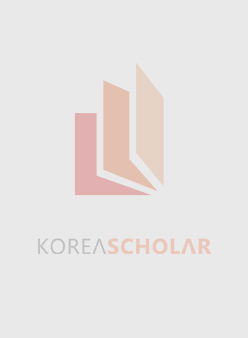간행물
교원교육 KCI 등재 Korean Journal of Teacher Education

- 발행기관 한국교원대학교 교육연구원
- 자료유형 학술지
- 간기 계간
- ISSN 1225-2042 (Print)2288-5706 (Online)
- 수록기간 1985 ~ 2021
- 주제분류 사회과학 > 교육학 사회과학 분류의 다른 간행물
- 십진분류KDC 370DDC 370
권호리스트/논문검색
제19권 제1호 (2003년 8월) 13건
1.
2003.08
서비스 종료(열람 제한)
5.
2003.08
서비스 종료(열람 제한)
6.
2003.08
서비스 종료(열람 제한)
The meaning of integration is creation of new characteristics by integration of different elements. The meaning of integration is different from case to case, from simple mixing two different characteristics, to the best, perfect integration. Traditionally integration is integration of different subjects so as to teach effectively and efficiently in contrast to teach each subject independently. Here I would like to conceptualize the integration as the integration of internal world of the learner rather than the external world. The integration of subject is classified as multidisciplinary, interdisciplinary and transdisciplinary approaches. Integration in a single subject is integration of cognitive, psychomotor, and affective domains, integration of unit among some subjects and integration of real life situation. The strong points for integration are to provide quality of education that can have perspectives for the meaning of life, provide accustomed teaching & learning environments. Also it is afformative effect to integrate cognitive, psychomotor and affedtive domain. The shortcomings of integration is the loss of the system of contents for teaching for coresponding subject, time consuming teaching and learning activities in classrooms, limitation of concepts or contents introduced in the classroom for teaching, lack of materials to support the integrated approach and difficulty of developing curriculum and related materials. The strategies for integrations are activity centered learning, respect for the selection of students, respect for the interests and concern of students, approach for the problem centered learning, stress relationship of related subject. Also examplary materials of integrations are
provided for deeper understanding of integration.
8.
2003.08
서비스 종료(열람 제한)
In this paper, I designed the development theory and teaching model for integrated science
curriculum by analyzing a diversity of educational curricula and integrated science education
practices. There are the results of this paper as follows: 1. After analyzing the curriculum-developing theories presented by Tyler, Johnson, and Posner, I have drawn indispensable factors to develop the integrated science education. Based upon these factors, I have set a whole framework for the integrated science curriculum and design overall curriculum-developing model. I based knowledge-centered integrated science education upon discipline-centered curriculum, social problem-centered integrated science education upon experience-centered curriculum and individual interest-centered integrated science education upon human-centered curriculum. 2. In setting up an overall framework for the integrated science education I sorted out teaching plan from curriculum developing. As I have designed curriculum-developing models, I have designed teaching models in three different directions of integrated science education; To the knowledge-centered teaching model I applied concept-related and exploration-related development method in order to integrate the knowledge of physics, chemistry, biology, and earth science. To the social problem-centered teaching model I applied process-centered development method such as a role-play in order to solve science-related social problems. To the individual interest-centered teaching model I applied the project method which gives the students an opportunity to achieve self-realization through the process of letting them choose the learning contents and conduct investigation for themselves. This study, as a preparation of the new science curriculum, will be applicable to the development of the science curriculum models and can be referenced as the direction of the integrated science education in school.
10.
2003.08
서비스 종료(열람 제한)
The purpose of this study was to identify the difficulties of subject integration between technology and home economics subject and to present its integration strategies. The review of literature and deliberative method were used to solving the problem of this study. According to the premise and alternative of subject integration in technology & home economics, the results of this study were as follows; First, the starting point of subject integration is to create a new subject name include elementary with secondary education. Second, the type of subject integration should be oriented to recognize the technology and home economics of discipline. Finally, the possible method of subject integration will be contributed integration or functional integration type. That integration method is not discipline structure viewpoint but the viewpoint of experience integration.
13.
2003.08
서비스 종료(열람 제한)

